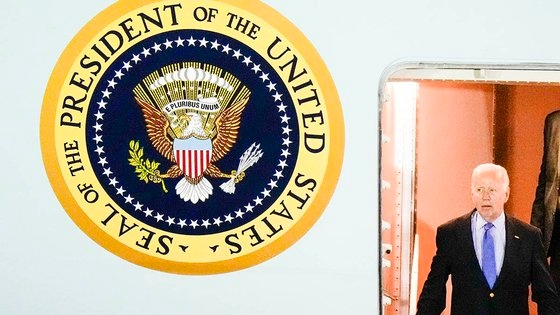



The Center for Strategic and International Studies (CSIS) in the United States suggests expanding the G7 to a G9 by including Korea and Australia. The CSIS report states that the current G7 is Eurocentric and lacks representation from Asian nations. Korea's key role in protecting the supply chain of advanced technology and its advancements in computing, AI, and technology make it a suitable candidate for G7 membership. The CSIS suggests integrating the seats held by EU entities or having the EU give up one of its seats to accommodate Korea and Australia. Discussions about adding Korea to the G7 have gained unanimous agreement in the United States. The idea of Korea's membership was initially proposed by former President Donald Trump in 2020, but it fell away with the Biden administration. However, the discussion was reignited by Ron Klain, a close aide to President Joe Biden, who argued that adding Korea and Australia is reasonable given the challenges posed by China. The forces opposing Korea's entry into the G7 consist of European countries concerned about weakened influence in the group and Japan, which is reluctant to welcome Korea's participation. Germany and Italy have excluded Korea from their invitation lists for the G7 summits in 2022 and 2024, respectively. The CSIS criticizes this exclusion, stating that it creates discontinuity in the global agenda and ignores Korea's contributions in the fields of AI and economic security [586d1813].
Meanwhile, Singapore and the United States are prioritizing the digital economy, paperless trading, and supply chain resilience to maximize the benefits of their 20-year-old free trade agreement (FTA). The decision was made during a Joint Committee Meeting of the US-Singapore Free Trade Agreement (USSFTA) on April 30. The USSFTA has been instrumental in facilitating business partnerships between Singaporean companies like Tat Hui Foods, the country's largest instant noodle maker, and key customers in the US. The two nations are celebrating the 20th anniversary of the USSFTA in 2024, which has tripled bilateral trade from US$40 billion in 2003 to US$120 billion in 2022. Trade experts in Washington consider it an exemplary deal. In 2020, Singapore, Chile, and New Zealand signed the Digital Economy Partnership Agreement, a groundbreaking deal that established innovative approaches to cross-border data flows and addressed challenges arising from digitalization. However, in November 2023, the US withdrew support for rules intended to facilitate digital trade, which trade experts view as a missed opportunity for the US [a50fe33d].
Negotiations for a trilateral free trade agreement (FTA) between China, Japan, and South Korea are likely to stall due to public support in Japan and South Korea to ease trade dependence on China. The FTA talks began in 2012 but have stalled since 2019. The prospects for concluding the FTA have been further reduced by the entry into force of the Regional Comprehensive Economic Partnership (RCEP), which includes all three countries. The GDP of China, Japan, and South Korea totaled US$17.52 trillion, US$5.31 trillion, and US$1.71 trillion, respectively, last year. Japan and South Korea are aiming to diversify their trade and supply chains away from China. The lack of trust between China and Japan and South Korea, as well as US pressure on Tokyo and Seoul against closer trade ties with Beijing, could hinder talks on the trilateral FTA. The resumption of FTA talks is seen as more symbolic than practical, serving political and foreign policy goals rather than economic benefits. Negotiations for the FTA might take years and even if a final deal is reached, it is unlikely to be comprehensive. Japan and South Korea would have little incentive to move negotiations forward unless the FTA goes beyond the scope of the already comprehensive RCEP. China's two-way trade with Japan and South Korea totaled about US$295 billion and US$287 billion last year [988b9529].
In light of these developments, there is an urgent need for China, Japan, and South Korea to enhance their economic and trade cooperation due to uncertainties surrounding US trade policies. A recent survey indicated that 82% of 239 South Korean companies expect to be negatively impacted by protectionist policies. The establishment of a China-Japan-South Korea free trade zone was proposed in 2002, and despite 16 rounds of negotiations since 2012, progress has been limited. A trilateral summit in May 2024 called for resuming FTA discussions, with Chinese Foreign Minister Wang Yi emphasizing the importance of mutual benefits and restarting negotiations. The significant economic complementarity among the three nations makes trade breakthroughs crucial for the effective implementation of the RCEP [4df60a11].